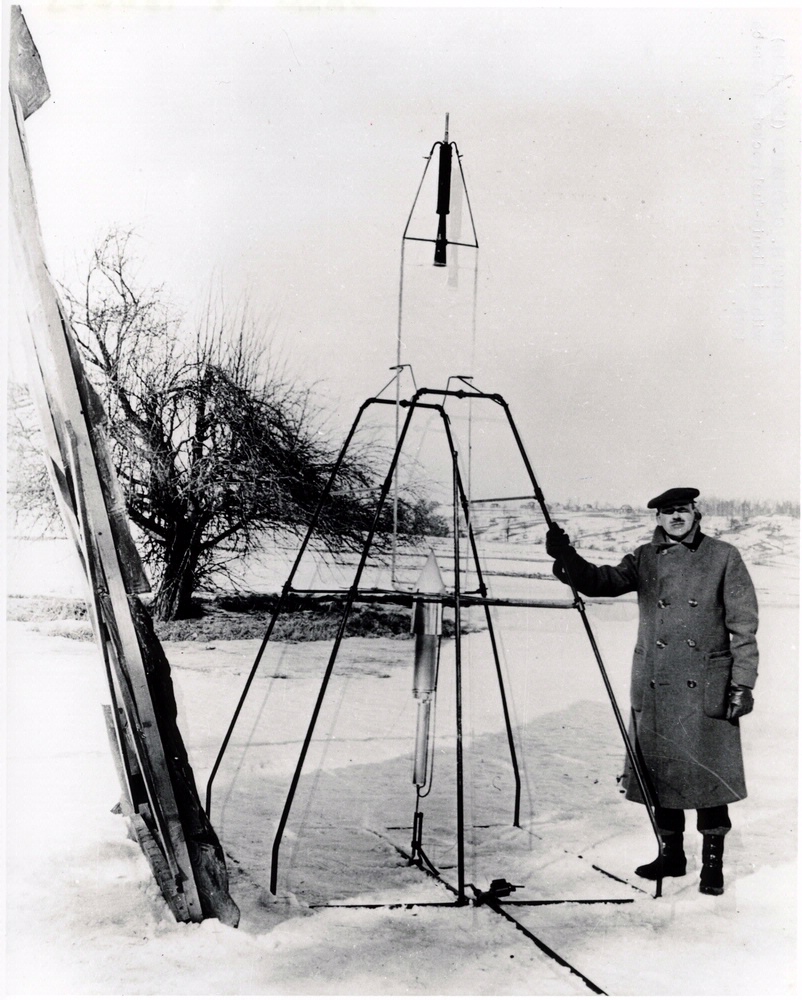For centuries, rockets were mainly used for weapons and fireworks. Only in the 20th century were new kinds of rockets developed, notably ones that burn liquid fuels.
To reach space, rockets must be lightly built and made mostly of propellants. To shed weight during flight, rockets use stages. Each stage contains its own engines and propellants. Once a stage burns all its fuel, it separates, allowing the remaining stages to reach higher speeds.
To overcome the Earth’s gravity entirely, an object must achieve escape velocity—about 25,000 miles per hour.
Unlike airplanes, rockets can fly into space because they don’t need oxygen to work—they carry their own with them. Oxygen and fuel are called propellants. To reach space, the force of a rocket (thrust), must be more powerful than the pull of gravity (weight), and the friction of Earth’s atmosphere (drag). Learn more about rockets in How Things Fly.
In his 1728 book A Treatise of the System of the World, Isaac Newton illustrated his theory of orbiting. A cannon ball repeatedly fired with increasing force from the top of a mountain would land increasingly farther away. If it were fired with enough force to reach a fast enough speed, it would continue to fall around the Earth but never land—it would be in orbit.
Several people independently realized the rocket was indeed the key to spaceflight. Three—Konstantin Tsiolkovsky, Hermann Oberth, and Robert Goddard—worked out the critical concepts and equations, including the use of high-energy liquid propellants and the importance of staging—stacking rockets on top of each other.
Often working in isolation, they dedicated their lives to developing and popularizing the concept of using a rocket to escape Earth and even to visit other worlds. Almost as important as these visionaries were the enthusiasts who popularized their ideas in the 1920s.
“The Earth is the cradle of mankind, but mankind can’t stay in the cradle forever.”
— K. E. Tsiolkovsky
After World War II, the Soviet Union and the United States combined German technology with the experience of their own rocket engineers. With the onset of the Cold War nuclear arms race, rocket technology advanced rapidity.
But the dreams of the space visionaries lived on, often among the same engineers who built intercontinental ballistic missiles. With the launch of the Soviet satellite Sputnik in 1957, spaceflight became a reality.









